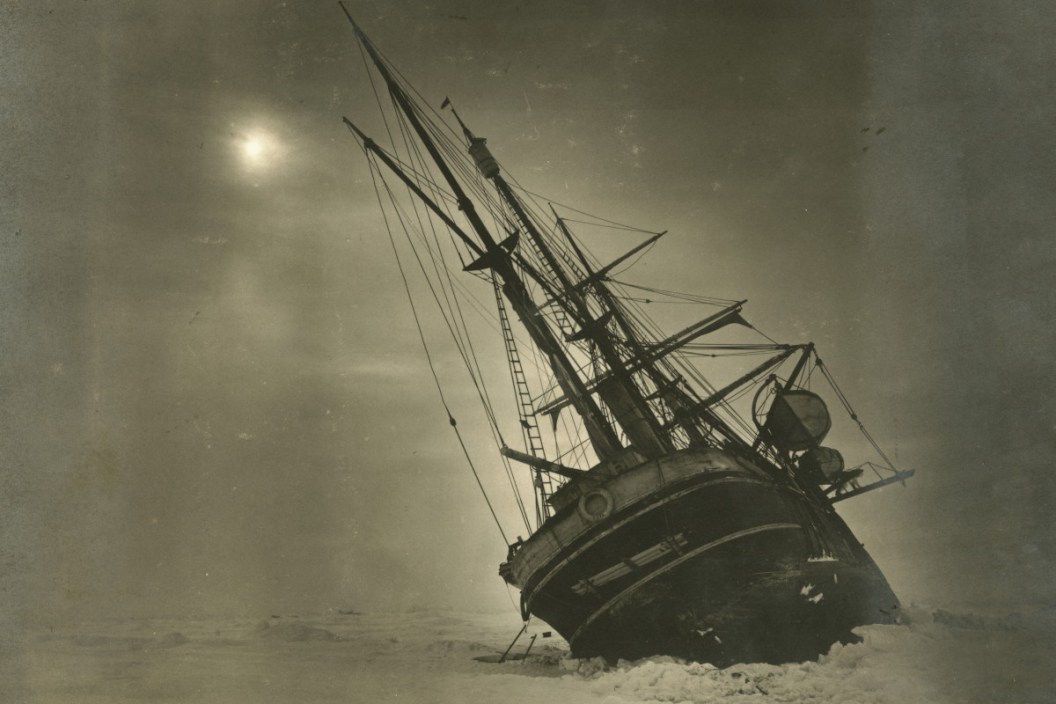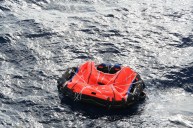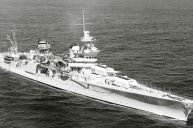The Endurance shipwreck may be the greatest survival tale ever.
There have been plenty of amazing survival stories throughout history, tales of humans triumphing against nature when all hope seems to be completely lost. However, perhaps no tale can top that of famous explorer Sir Ernest Shackleton's lost ship known as the Endurance in Antarctica.
Part of an ill-fated attempt to be the first to sail across the Antarctic Sea, the Endurance was crushed by sea ice, leaving the crew stranded in one of the most inhospitable places on the planet. The odds were severely stacked against any of the men surviving.
Amazingly, all 28 men involved in the expedition survived more than a year and a half at the mercy of the ocean. They floated on pack ice and in lifeboats before three of them finally reached a remote whaling station and were able to send help for the others.
It's an inspiring tale that gets harder and harder to believe the more you learn about it. It's nonetheless true, and includes the kind of details that will stick with you.
Prelude to the Wreck
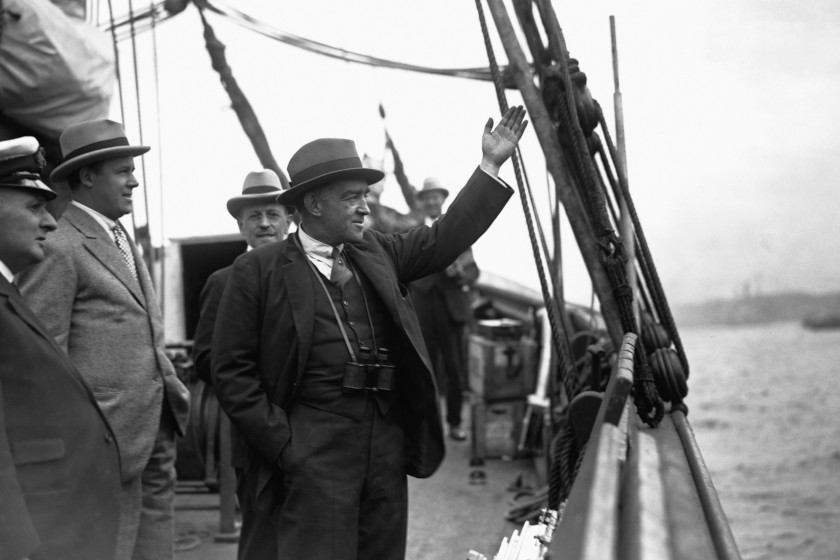
Getty Images: Hulton Deutsch + Contributor
Expedition leader Ernest Shackleton was already a famous explorer prior to the fate of the Endurance. Originally from Ireland, he had taken part in several noteworthy Antarctic expeditions already. From 1907 through 1909, he led the Nimrod Expedition, which had a goal of being the first to reach the South Pole, but ultimately came up a little under 100 miles short. A few years later, Norwegian explorer Roald Amundsen became the first to reach the South Pole, but it didn't matter, Shackleton was famous upon his return home. He was even knighted, and newspapers declared him a hero for his efforts.
Still, Shackleton knew Antarctica was one of the last untamed frontiers on the planet, and he wanted to explore more of it. He quickly began planning and raising funds what would later become the Imperial Trans-Antarctic Expedition. Their goal was to become the first to cross the Weddell Sea in a ship.
For the journey, Shackleton purchased a 144-foot ship built in Norway named the Polaris. He selected this ship because it was an icebreaker that had been designed specifically for the types of icy conditions they would experience in the Arctic. It had a hull that was thicker than normal and featured extra reinforcements to withstand the dangers lurking in those icy waters. The ship was renamed "The Endurance," and the expedition had their vessel.
From there, Shackleton carefully hired a group of experienced sailors and adventurers to be the Endurance crew. He hired 27 men, but the crew ended up being 28 after a stowaway by the name Perce Blackborow was later made part of the crew after the expedition was already well underway.
Perhaps Shackleton's best decision was hiring a man by the name of Frank Worsley to be the captain of the Endurance. Shackleton had no way of knowing it at the time, but Worsley wound up being a major reason for the group's survival. With the ship and crew set, the expedition set sail in August of 1914.
Warnings Not Heeded
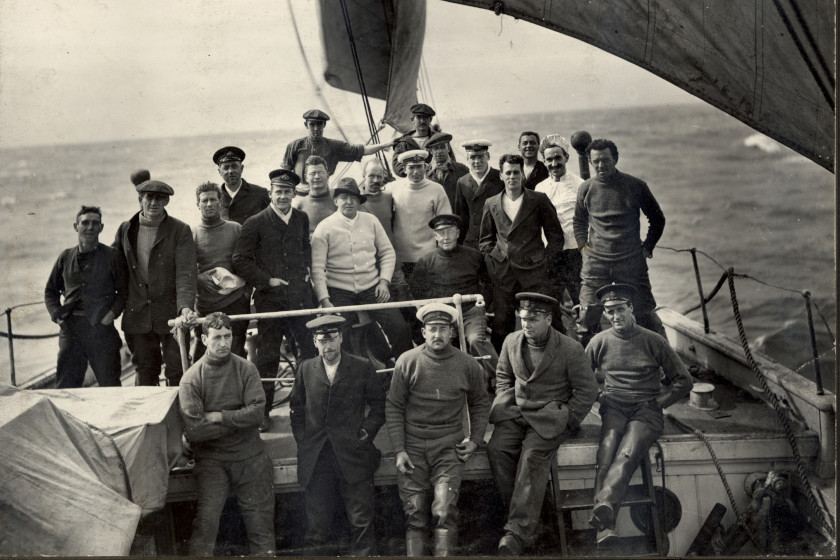
Getty Images: Scott Polar Research Institute + University of Cambridge
Shackleton did not join the expedition until it arrived in Buenos Aires, Argentina. The Endurance did not officially leave there until October 26, 1914, when it set sail for the next port of call on the island of South Georgia, where she arrived on November 5, 1914. This island in the south Atlantic Ocean sits just under a thousand miles from the Falkland Islands, and it plays a key part later in the story. When the Endurance arrived, the whalers stationed there were astonished when they heard of Shackleton's plans. Reportedly, many of them warned him it was suicidal to attempt a crossing at that time of year. They told the crew the ice floes would be far too thick for them to pass through. Undeterred, Shackleton's Endurance left South Georgia a month after arriving on December 5, 1914. It was the last contact the crew would have with the outside world for the next year and a half.
It only took about two days of sailing before Shackleton and the crew members encountered the thick ice the whalers had warned about, and it slowed their progress to a snail's pace. There was no rushing through the ice packs. Many times, the crew had to simply wait and take the openings the shifting chunks of ice gave them. Still, they were moving towards their destination in Vahsel Bay, albeit slowly. Most accounts have them covering 30 miles or less each day during this period.
Unfortunately, in January 1915, progress slowed even more as the pack ice started to close in on all sides. The pressure released the ship a few times before trapping it again. On January 24, 1915, the ship's engines were pushed to the limit when they tried to power through. The ship was stuck tight, and the shifting nature of ice soon meant that any openings had drifted away. The crew had no choice but to wait for the dead of winter to pass and the ice to break up.
The crew maintained the ship, hunted penguins, and played games to pass the time and keep morale as high as they could. It wasn't easy considering this part of Antarctica was dark 24 hours a day. Legend has it the captain, Worsely, took a bath in the ice in temperatures reaching -25 degrees to give his crew a laugh and keep spirits up. Although behind the scenes, both Shackleton and Worsley knew their situation was becoming quite perilous.
On Valentine's Day 1914, the crew spotted open water again and decided to try and clear a path in the ice using hand tools. They were successful in clearing some room for the ship to move, but it wasn't enough to break through to the opening. The ship was still moving with the ice pack, but pressure was also slowly building on the hull as the months stretched on.
The Endurance is Lost
There was nothing the crew could do to stop or lesson the pressure of all the shifting ice on the hull of the trapped ship. Worsley had been hopeful the ship could float on its own again once the spring came, but the ice had caused irreversible damage to the ship's structure. By the end of September 1915, it became obvious the Endurance would soon have a permanent home on the Arctic seabed.
Throughout October of 1915, the crew battled leaks with bilge pumps and had several close calls as ice packs caused the ship to list and then return upright after they shifting ice retreated. The spring was extremely close. Daylight had returned and temperatures had warmed significantly. However, the crew's last-ditch efforts to save the ship ended in failure. Shackleton finally ordered the crew to abandon the Endurance on October 27, 1915. The crew took as much equipment from the ship as they could and started camping on the ice a couple miles from the wreck.
The Endurance didn't go down right away either. She was slowly but surely crushed, which had to be a huge blow to the morale of the crew. This may have been the most documented shipwreck of the 1900s thanks to expedition photographer Frank Hurley's many incredible photographs of the Endurance's final days. The ice finally finished its job on November 21, 1915, when the Endurance finally vanished into the ocean for good.
The Fight for Survival Begins
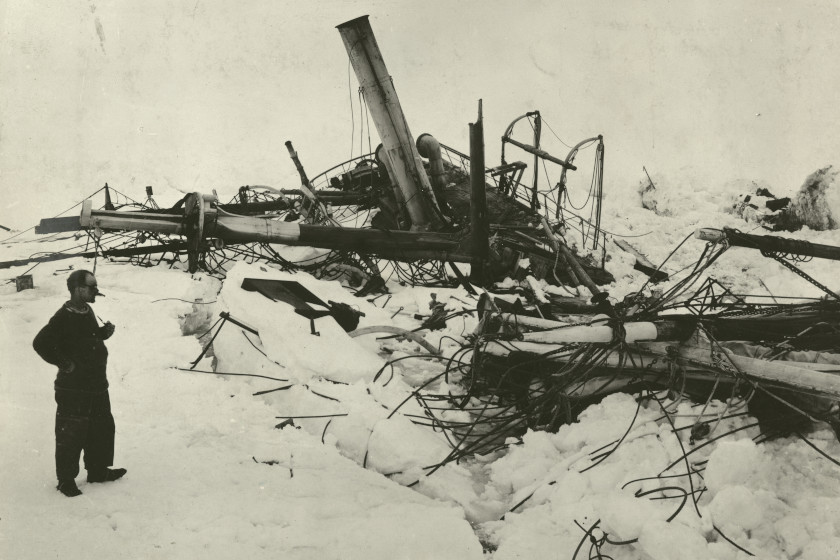
Getty Images: Scott Polar Research Institute, University of Cambridge
After Ernest Shackleton's ship finally sank, the crew members knew their situation was beyond dire. They had salvaged quite a bit from the ship, both before and after she sank, but they needed a plan to get off the ice. That meant a 300+ mile trek towards the nearest land. They decided to pile supplies into the Endurance's lifeboats and drag them across the ice. This led to a key moment in the crew's morale. Onboard the ship were some 69 dogs and one ship cat. Shackleton decided their situation was too dire for the men to care for all these animals. He ordered some of the weaker dogs and the cat to be euthanized (by way of bullet), freeing up resources for the rest of the animals and the men.
The cat, named Mrs. Chippy despite being a male cat, belonged to the ship's carpenter, Harry McNish. Recounts of the story say it was sort of an inside joke, because McNish's nickname was Chippy. In any case, the cat was an especially hard loss on the men, who had adopted the feline as their unofficial mascot. It's alleged that McNish never forgave Shackleton for killing his cat.
After downsizing their supplies, the men began dragging their still-heavy boats and did so for a few days before realizing their efforts were pointless. They made less than ten miles of progress, and the ice was shifting them farther away, negating all their movements. Eventually, Shackleton and Worsley realized the only thing they could do was wait, because the ice floe was still drifting north. Eventually it would take them towards open water.
At the same time, food stores were running low. Eventually, the men were forced to kill and eat the remaining dogs just to stay alive. This was another giant blow to the morale of the crew, all of whom had miraculously survived nearly a year trapped in Antarctica.
Getting Off the Ice
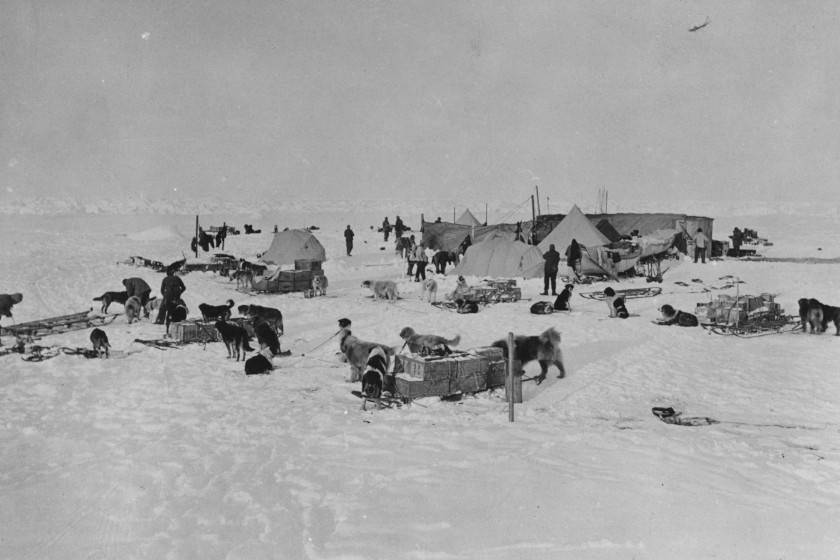
Getty Images: Hulton Archive
Finally, in April of 1916, the endless pack of ice around them gave way to the sight of open waters to the north. The spring thaw was well underway by this point and the ice quickly started breaking up beneath the camp. It was a good thing the crew had salvaged the lifeboats of the Endurance, because just two days later they were forced to break down the camp and take their chances on the open ocean.
The adventurers only had one place they could go, the rocky shores of Elephant Island, which lay just under 30 miles from where they had been forced to abandon their icy camp.
This was where Worsley's value to the expedition came in, because it took the lifeboats almost six days to reach the island through rough seas with 20-foot waves that relentlessly battered the boats. Somehow, Worsley was able to accurately plot their position using a sextant in horrific conditions with limited visibility.
By this point in the trip, many of the men were ill with either dysentery or seasickness from the bucking waves. They had spent too much time on a slow-moving ice shelf and their sea legs were long gone. It's safe to say the group was in bad shape when they finally hit Elephant Island on April 15, 1916.
A Desperate Bid to Find Help
Even though the crew had finally hit land for the first time in nearly 500 days, the only thing Elephant Island saved them from was the possibility of falling through melting ice and drowning. The island was nothing more than a cold, snowy rock nearly devoid of life except for a few penguins and seals. There were no settlements and no people to help them back to civilization.
Shackleton and Worsley knew they needed to make a move if any of them were going to get out of the situation alive. The Falkland Islands were just under 600 miles due north of their location. Worsley, drawing on his years of experience on the ocean, realized the better option was to try and make it back to South Georgia Island where they could find help at the whaling station. It was nearly 300 miles further away, but Worsley realized the currents of the ocean would naturally help carry them straight to it.
Without any other options, Shackleton and Worsley selected the best of their three remaining lifeboats, the "James Caird," a 22-foot former whaling boat for the journey. Despite the hardships up to that point, it is said that all the men volunteered for the trip to South Georgia. Shackleton selected Worsley, second officer Tom Crean, boatswain John Vincent, seaman Timothy McCarthy, and McNish for the journey.
We should mention McNish played an important role here because the men realized they would never survive the 800-mile trip in an open craft. McNish tore apart the two remaining lifeboats for extra wood to construct a cabin to protect them from the elements and masts to help them steer in the rough seas. The makeshift boat left Elephant Island on April 24, 1916.
For the next 17 days, it was battered by waves as high as 50 feet in the ocean. They had to adjust their course several times as the men got sicker and sicker on the journey, constantly suffering wet and cold conditions. Finally, on May 10, 1916, the men landed on South Georgia. The only bad part was that they landed on the opposite side of the island from the whaling station. This was a result of their course corrections to make sure they didn't miss the island completely.
The men quickly ruled out rowing the boat around to the other side of the island. Most were in bad shape and there were real concerns about getting the James Caird smashed on the rocks from the rough waters. Instead, Shackleton, Worsley, and Crean decided to cut straight across the island's interior, leaving the others behind because they were in no shape to walk.
Unfortunately, there were no maps; no one had ever explored the interior. The extremely rugged island was covered with glaciers and mountain peaks reaching up as high as 9,000 feet.
The Final Rescue
Shackleton, Worsley, and Crean finally set off on their journey across the island on May 18, 1916. The three men walked for 36 hours straight, stopping often for short breaks. Since they had no idea what the terrain was like in front of them, they frequently had to backtrack and improvise new routes across the dangerous landscape. Finally, on May 19, the three men stumbled into the whaling settlement, much to the surprise of the whalers stationed there!
McNish, Vincent, and McCarthy were later rescued that same day by a Norwegian whaling vessel sent to the other side of the island for them. They also recovered the modified lifeboat that had brought them there.
With the men on the rescue team safe, the only thing left was to rescue the other members of the crew that were waiting on Elephant Island. This was easier said than done. There was a real lack of ships that could safely navigate the icy waters. Three attempts to reach the island had to turn back due to dangerous conditions.
Eventually, a suitable craft was found in Chile. Shackleton finally made it back to Elephant Island with a rescue crew a staggering 128 days after he left. They finally arrived on August 30, 1916. Miraculously, the remaining 22 men had survived the two-year ordeal.
The Aftermath of the Wreck
Despite some severe sickness and extreme frostbite, the crew made it home safely. Even though they were involved in arguably the greatest survival story ever, most never benefited from the fame of their ordeal. Shackleton tried to organize another Antarctic expedition in 1922, but he died of a heart attack in South Georgia before it could get underway. It's also his final resting place.
Worsley joined the fight of World War I shortly after being rescued and became captain of an armed Q-Boat, which later rammed and sank a German U-Boat. He also served in the Red Cross during World War II. He died in 1943.
The Endurance Wreckage is Found
In March of 2022, the wreckage of the ship Endurance was finally located 9,800 feet beneath the surface of the ocean by the expedition Endurance22. Despite having vanished beneath the waves over 100 years earlier, the ship is still in remarkably good shape sitting upright on the bottom. Photos and video of the wreck instantly went viral on the Internet. All previous expeditions to find this wreck had failed due to the thickness of the sea ice in the area. However, record low ice levels and the latest in sonar and underwater drone technology allowed researchers aboard the ship Agulhas II to finally locate the ship within three miles of where Worsley had last charted her position.
It's amazing none of the crew members of the Endurance were lost to sickness or hypothermia in their nearly year and a half in the wilds of Antarctica, especially when you consider how many people had died in previous expeditions to this unforgiving part of the world. It remains one of the greatest survival stories of all time, and it's likely it will never be topped.
For more outdoor content from Travis Smola, be sure to follow him on Twitter and Instagram For original videos, check out his Geocaching and Outdoors with Travis YouTube channels.
READ MORE: WHAT SKILLS AND TOOLS DO YOU REALLY NEED FOR A WINTER SURVIVAL SITUATION?
